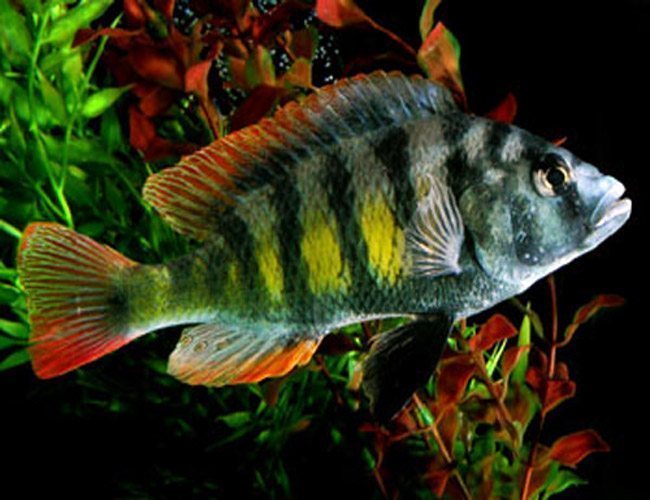
Oftentimes, the red zebra will seek to maximize the size of their chosen “home” by creating a pit in the substrate underneath covered shelter. It is often a pointless exercise to undo the arrangements of a red zebra, as they will readily overrule the keeper by moving everything back into the arrangement they desire. This means keepers of red zebra cichlids often find their desired tank aesthetic slowly altered by this fish to maximize its comfort in the tank. This is a species known to “arrange” substrate pebbles, small plants, and other aquarium decor far more often than other aquarium fish. In addition, every keeper of the red zebra cichlid should be mindful of their preference for rocky terrain with numerous hiding places - for both smaller, weaker fish to seek shelter, and for the red zebra(s) to claim as their territory. One should exercise caution when selecting tank mates because even if one takes care to only house a red zebra with other cichlids, South American cichlids and African cichlids are often unable to share a community tank in peace (though it is completely within the realm of reason for an experienced aquarium keeper to make this work). Like any cichlid, it is recommended to house red zebra cichlids in rather large tanks with several other African cichlids.

Like the other cichlids of this genus, they are best kept in a harem with one male to many females. The males are territorial over the areas they prefer and those who reach dominance in an aquarium will pick on subordinate males and behave territorially in general. OB males (so called "marmalade cats") are extremely rare in the wild.Įarly exporters often selected the red females for the aquarium trade and used O-morph males to create a strain of orange-red males, making it the most commonly found variant from breeders and fish keepers.

O morph males (found only at Minos Reef) are white-pink colored with a tint of blue in the fins. However, red-orange females (O morph) as well as blotched females (OB morph) can be found in certain localities. The normal color of wild females is beige to brown while males are typically bright blue. Specifically, this species of freshwater tropical fish can be found along the eastern coast of the lake from Chilucha Reef near Metangula to Narungu.įemales can grow up to 10 cm (4 in) while males will grow up to 12.7 cm (5.0 in).ĭespite their "red zebra" name, this species is polymorphic and can be found with different colors. Maylandia estherae is endemic to Lake Malawi.

The specific name of this fish honours Esther Grant, the wife of the cichlid exporter Stuart M. Most ichthyological taxonomists place the species in Maylandia, though Ad Konings and thus much of the aquarium-related literature use Metriaclima instead. The genus name for this fish was once Pseudotropheus but that name is now restricted to different fish. This fish, like most cichlids from Lake Malawi, is a mouthbrooder - females hold their fertilized eggs then fry in their mouths until they are released after about 21 days. It is a rock dwelling fish or mbuna from Lake Malawi. Maylandia estherae (the Red Zebra mbuna, Red Zebra Cichlid, or Esther Grant's Zebra) is a haplochromine cichlid.


 0 kommentar(er)
0 kommentar(er)
